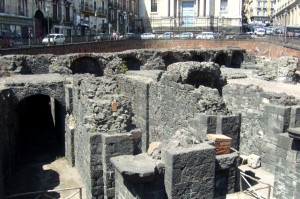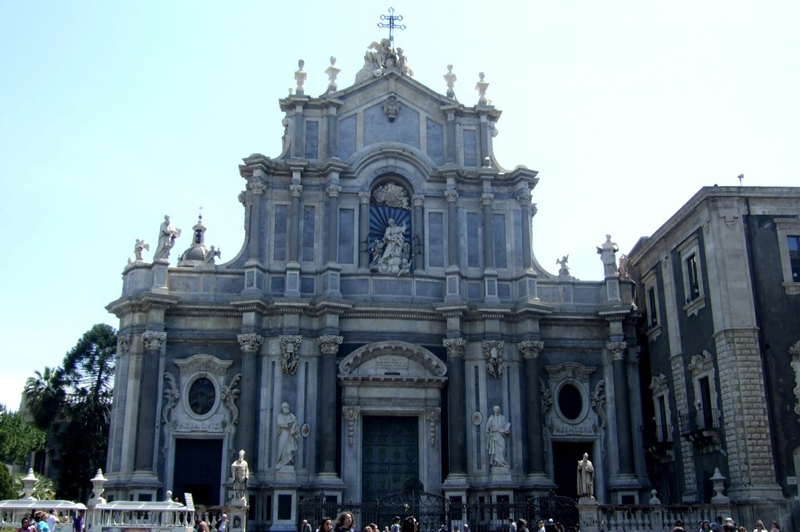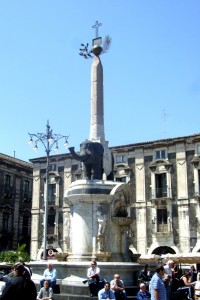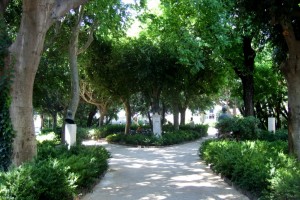Guest Post By: Margie Miklas
Catania is Sicily’s second-largest city and has a population of 300,000. Visitors sometimes choose to stay here because of its proximity to Mount Etna, Europe’s largest active volcano. Catania’s rich Baroque architecture however makes it a fascinating travel destination on its own.
Catania has been almost completely destroyed on more than one occasion. Much of the destruction occurred in the 17th century when most of the city was covered in lava, and then only 24 years afterwards, in 1693 a devastating earthquake killed two-thirds of Catania’s population. Afterwards the result was massive rebuilding of the old part of Catania in the Baroque style of architecture. Many of these buildings and monuments were built using lava, so the appearance of the grey structures make for great sightseeing when traveling to Catania.
Piazza del Duomo is the center of Catania and declared to be a UNESCO World Heritage site. Dominating the piazza is the Catania Cathedral, a magnificent piece of architecture. Dedicated to Sant’ Agata, Catania’s patron saint, this cathedral was built on the site of an 11 th century church which was demolished in the earthquake.
Elephant Fountain
Standing high in the center of Piazza del Duomo is the Elephant Fountain, which has become a symbol of Catania and its most famous monument. Built by Giovanni Battista Vaccarini in the 18 th century, Fontana dell’ Elefante is known as “Liotru” by the Catanians. The elephant is made of black lava stone and on top of the elephant is an Egyptian obelisk with a globe above it and an inscription to Sant’ Agata.
For one of the best views of the city and also Mount Etna from Catania walk up the hill on via Etnea to the beautiful public gardens of Villa Bellini. There are 17 acres of exotic plants and trees and walking here presents a welcome break after a day of sightseeing. It is a great alternative to the stone buildings that make up much of Catania and provides an opportunity for a rest from walking the cobblestoned streets.
 Roman Amphitheatre or Teatro Antico
Roman Amphitheatre or Teatro Antico
In the center of the city at Piazza Stesicoro is what remains of a 2nd century B.C. Roman amphitheatre. At the time of its glory it could seat up to 17,000 spectators and it was the only amphitheatre larger than Rome’s Colosseum. According a plaque at the site, the amphitheatre was abandoned by the end of the 5 th century, “stripped of the lava wall-blocks for the construction of the Cathedral by the Normans” in the 11 th century and for the city walls by Charles the 5 th in the 16 th century.
Catania’s airport, Catania-Fontanarossa Airport is the busiest in Sicily with more than six million passengers in 2010. Considered to be the gateway to Sicily’s eastern coast, this airport makes it easy to arrive into Catania from other cities in Italy as well as Europe. Catania has a lot to offer besides being simply a gateway to Mount Etna. The city is rich in history and architecture and well worth a travel stop on your Sicily itinerary.
Guest Post By: Margie Miklas










